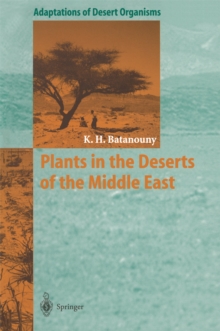
Dispersal Biology of Desert Plants PDF
by Karen van Rheede van Oudtshoorn, Margaretha W. van Rooyen
Part of the Adaptations of Desert Organisms series
Description
Dispersal processes have important effects on plant distribution and abundance.
Although adaptations to long range dispersal (telechory) are by no means rare in desert plants, many desert plant species do not possess any features to promote dispersal (atelechory), while others have structures that hamper dispersal (antitelechory).
The high frequency with which atelechorous and antitelechorous mechanisms are present in plants inhabiting arid areas indicates the importance of these adaptations.
Among the benefits derived from these adaptations are the spreading of germination over time, the provision of suitable conditions for germination and subsequent seedling establishment, and the maintenance of a reservoir of available seeds (seed bank).
This book describes the ways and means - anatomical, morphological and ecological - by which dispersal in desert plants has evolved to ensure the survival of these species in their harsh and unpredictable environment.
Information
-
Download - Immediately Available
- Format:PDF
- Publisher:Springer Berlin Heidelberg
- Publication Date:09/03/2013
- Category:
- ISBN:9783662035610
Information
-
Download - Immediately Available
- Format:PDF
- Publisher:Springer Berlin Heidelberg
- Publication Date:09/03/2013
- Category:
- ISBN:9783662035610










